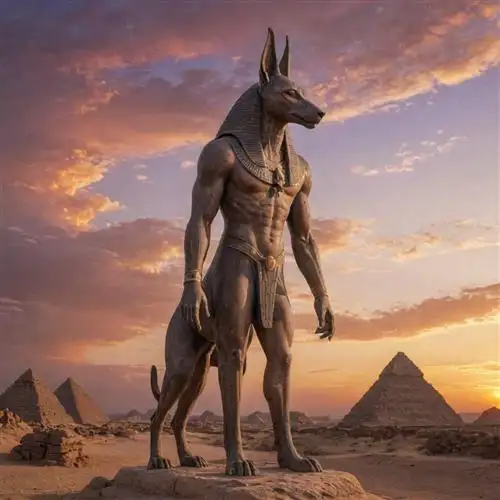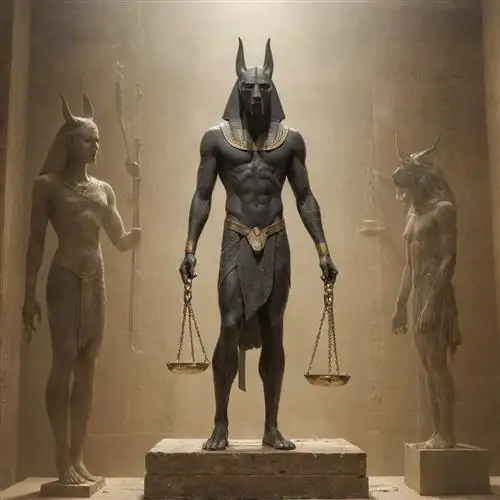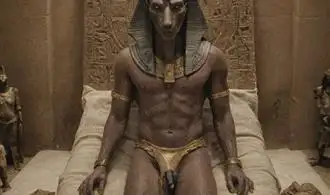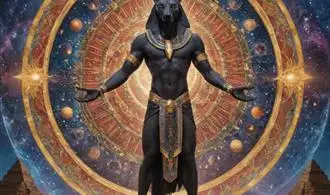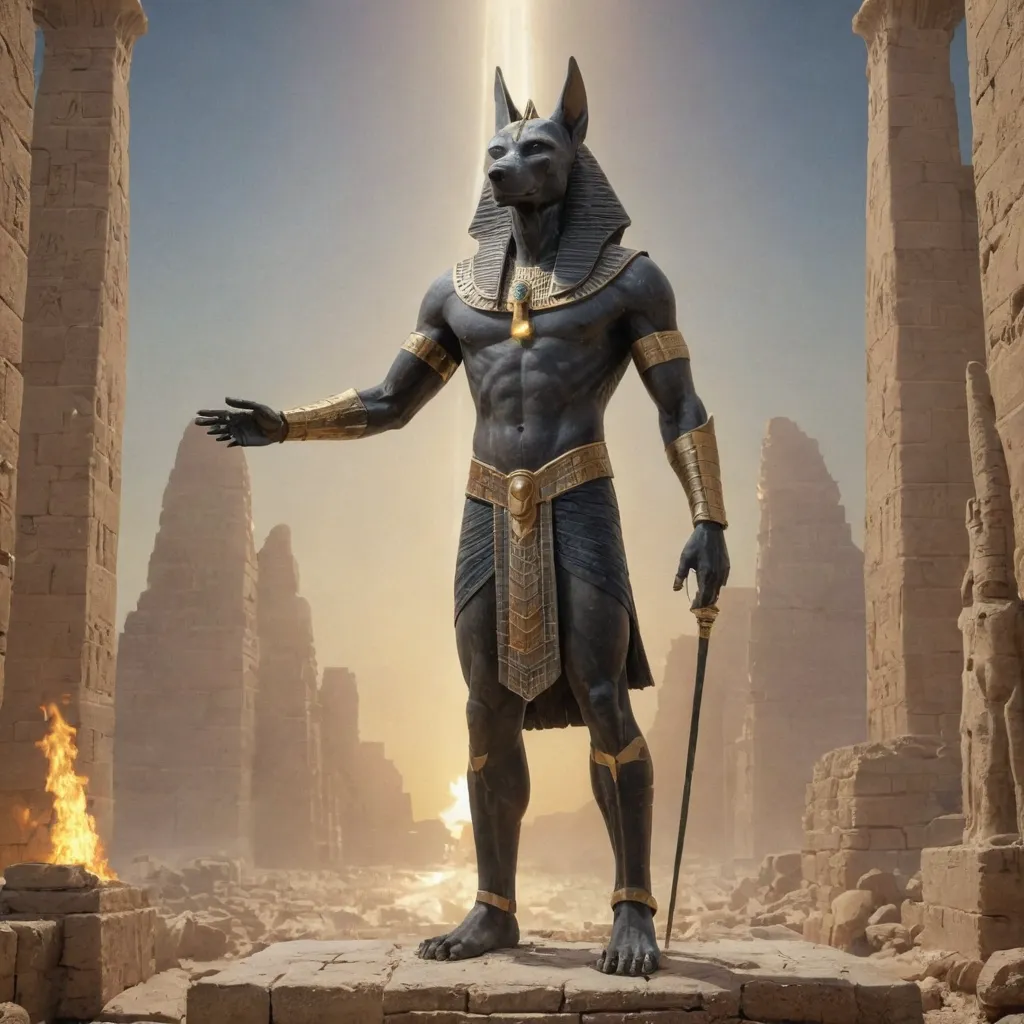
Anubis The Jackal God
Anubis, the enigmatic Jackal God of ancient Egyptian mythology, has endured as a powerful and enduring symbol in modern times. At the heart of this enduring legacy lies the profound reverence and symbolic significance that this deity has maintained throughout the ages. As the god of embalming, death, and the afterlife, Anubis played a pivotal role in the ancient Egyptian belief system, guiding the dead through the complex journey of the underworld.
The iconography of Anubis, with his distinctive jackal-headed form, has become a recognizable and iconic representation of this ancient deity. The jackal itself was revered in ancient Egypt for its association with the desert, a realm often linked to the realm of the dead. This symbolic connection between the jackal and the afterlife solidified Anubis' role as the gatekeeper and protector of the dead, ensuring the safe passage of the deceased into the next life.
Beyond his role as the guardian of the dead, Anubis was also a deity of great importance in the ancient Egyptian pantheon. As the son of the god Ra and the goddess Nephthys, Anubis was closely associated with the sun god, further emphasizing his connection to the cycle of life, death, and rebirth. This duality of Anubis, as both a figure of death and a symbol of renewal, has contributed to the enduring appeal and relevance of this ancient deity in modern times.
The continued presence of Anubis imagery in contemporary art, literature, and popular culture is a testament to the powerful and enduring symbolism of this enigmatic deity. From tattoos and fashion accessories to featuring in blockbuster films and video games, the image of Anubis has become a ubiquitous and instantly recognizable symbol, captivating the imagination of people across the globe. How to Interpret Anubis Symbols Like an Expert delves deeper into the rich symbolism and iconography associated with this timeless figure.
The Significance of Anubis in Ancient Egyptian Mythology
Anubis, the jackal-headed deity, held a profound significance in the ancient Egyptian pantheon. As the god of embalming and the afterlife, Anubis played a crucial role in the complex and intricate belief system of the Egyptians. His importance extended beyond the realm of the dead, as he was also associated with the protection and guidance of the living.
One of the primary roles of Anubis was as the guardian and protector of the dead. He was responsible for the mummification process, ensuring the proper preservation of the deceased's body. This act was critical in the ancient Egyptian belief that the soul, or "ka," could only reunite with the physical body after death. Anubis's presence during this ritual ensured the successful transition of the deceased into the afterlife.
In addition to his role as the embalmer, Anubis was also seen as the guide and protector of the dead as they navigated the underworld. He was believed to weigh the heart of the deceased against the feather of Ma'at, the goddess of truth and justice, to determine the individual's moral worthiness. This judgment process was a crucial step in the Egyptian conception of the afterlife, and Anubis's presence ensured the fairness and accuracy of this assessment.
The imagery and symbolism associated with Anubis also held deep significance. The jackal-headed form of the deity was believed to represent his connection to the natural world and the cycle of life and death. Jackals were often found near burial sites, scavenging the dead, which led the Egyptians to associate them with the afterlife and the realm of the dead.
Furthermore, the color of Anubis's skin, often depicted as black, held symbolic meaning. The black color was seen as a representation of the fertile soil of the Nile River Valley, which was essential for agricultural prosperity and sustenance. This association with the earth and the cycle of life and death further reinforced Anubis's role as a guardian and protector of the deceased.
Anubis Iconography in Modern Art and Design
Anubis, the ancient Egyptian jackal-headed deity, has long been a source of fascination and inspiration for artists, designers, and cultural enthusiasts. In modern times, Anubis imagery has remained a powerful symbol, transcending the boundaries of ancient mythology and finding its way into various forms of contemporary art and design.
One of the most striking examples of Anubis' enduring influence can be seen in the realm of modern art. Many contemporary artists have incorporated Anubis motifs into their works, using the iconic jackal-headed figure to explore themes of death, transition, and the afterlife. From large-scale murals to intricate sculptures, Anubis has become a recurrent visual element, often serving as a compelling metaphor for the complexities of the human experience.
In the field of design, Anubis imagery has experienced a surge of popularity, particularly in the realm of graphic design and fashion. Designers have skillfully incorporated Anubis-inspired symbols, patterns, and silhouettes into their creations, imbuing them with a sense of ancient mysticism and contemporary flair. From haute couture collections to avant-garde street wear, Anubis has become a symbol of cultural heritage, highlighting the enduring allure of ancient Egyptian aesthetics.
Furthermore, the integration of Anubis imagery extends beyond the realms of art and design, permeating various aspects of popular culture. In the world of entertainment, Anubis has appeared in films, television shows, and video games, often serving as a narrative device or a visually striking element that captivates audiences. The juxtaposition of the ancient Egyptian deity with modern storytelling techniques has only further solidified Anubis' status as a timeless and universally recognizable symbol.
Interestingly, the versatility of Anubis imagery has also led to its incorporation into the world of branding and corporate identity. Companies and organizations have leveraged the power of Anubis to convey a sense of authority, mysticism, or a connection to ancient Egyptian heritage, often utilizing the jackal-headed figure as a distinctive logo or visual element.
The Enduring Symbolism of Anubis
Anubis, the jackal-headed Egyptian deity, has remained a powerful and enduring symbol throughout history and into the modern era. This ancient god's significance extends far beyond his role as the lord of the dead, delving into the very core of Egyptian mythology and the human experience.
At the heart of Anubis' enduring symbolism is his connection to the afterlife and the process of mummification. As the protector of the dead and the guide who ushered the souls of the deceased into the afterlife, Anubis played a critical role in the Egyptian belief system. His presence during the mummification process, overseeing the embalming and preparation of the body, cemented his status as a figure of immense importance and reverence.
The imagery of Anubis has captivated the collective imagination for millennia. The jackal-headed figure, with its striking contrast of human and animal features, has become a universally recognized representation of ancient Egyptian culture and spirituality. This powerful visual symbolism has transcended the boundaries of its original context and continues to resonate with audiences around the world.
Beyond his funerary associations, Anubis also embodies broader themes of transformation, rebirth, and the cyclical nature of existence. His dual role as both the protector of the dead and the guardian of the living reflects the interconnectedness of life and death, a concept that continues to fascinate and inspire modern thinkers and artists.
The enduring appeal of Anubis can be attributed to his ability to encapsulate the human experience in all its complexity. As a figure who navigates the liminal space between the mortal and the divine, Anubis serves as a bridge between the earthly and the transcendent, offering a tangible representation of the mysteries of life, death, and the afterlife.

